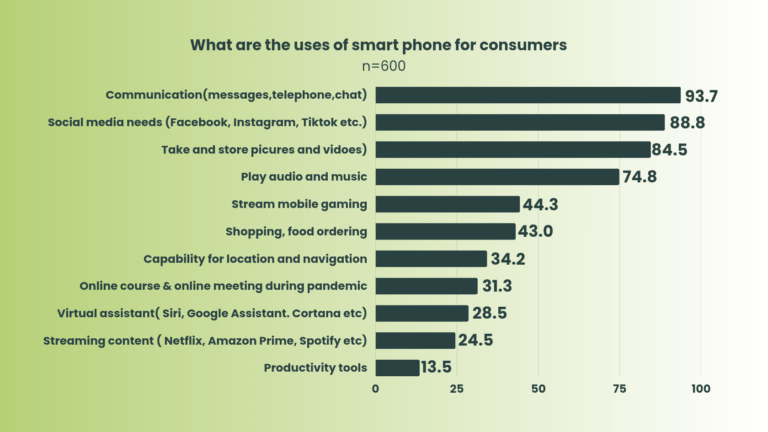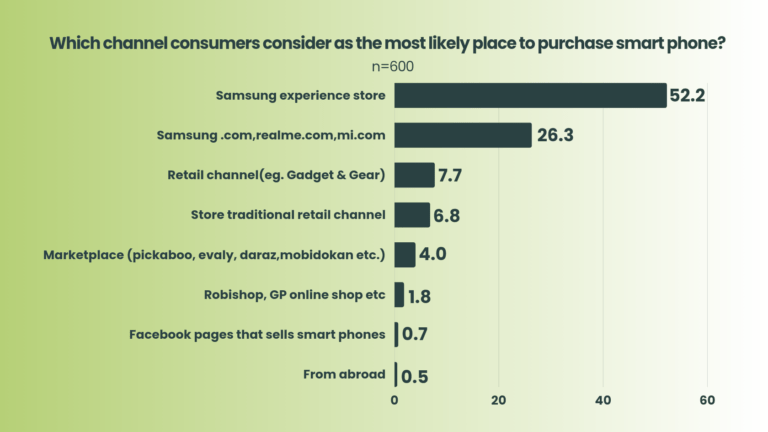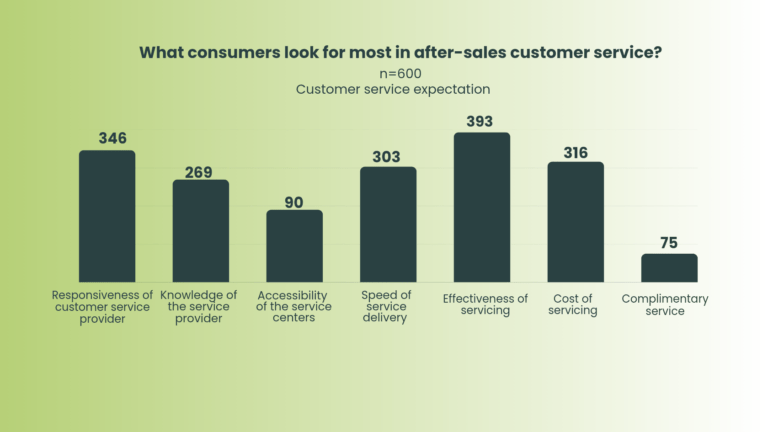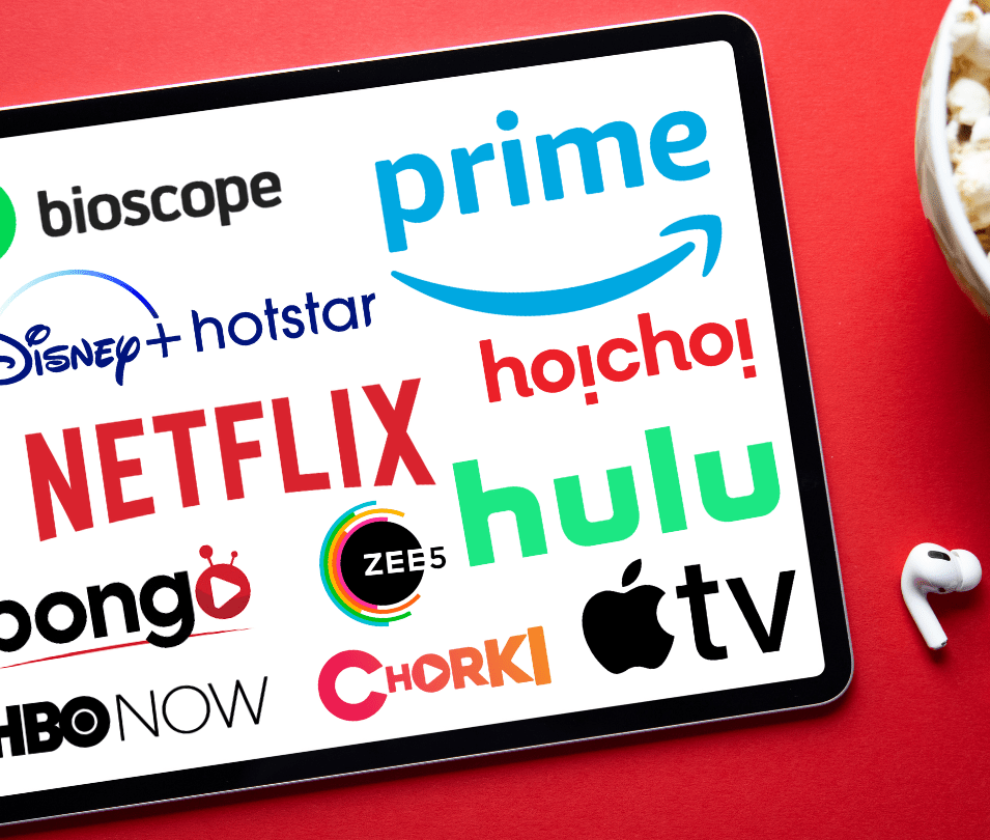In a country where the youth population constitutes a quarter of the total, reflects that the potential of the smartphone industry as an essential device is undeniable. The young population presents an opportunity for emerging smartphone brands by understanding the consumer needs , decision factors and service expectations.
The recent Global System for Mobile Communications Association (GSMA) report predicts that by 2025, smartphone ownership among mobile phone users in Bangladesh will rise from the current 40% to 62%. This shift signifies evolving youth preferences, embracing connectivity, information access, and participation in the digital realm.
In this study, we explore the significance of comprehending consumer behavior as a cornerstone for smartphone manufacturers aiming to capitalize on Bangladesh’s market potential by delving into the factors driving youth consumption behavior in smartphone adoption, channel preferences & purchasing decisions among the youth and effective brand management strategies fostering lasting brand loyalty.
Study Design
The study’s target group encompassed youth aged 17 to 35, representing diverse genders and falling within the Socio-Economic Classes (SEC) of A and B. The study aimed for an optimal sample size of 600 respondents. And the study spanned the entire nation, covering both urban and peri-urban settings, with responses collected from all 8 divisions.

The youth population in Bangladesh, typically aged between 15 to 30 years, has displayed a substantial shift in their content consumption patterns. This shift can be attributed to factors such as improved internet infrastructure, reduced data costs, and the widespread availability of smartphones. Social media platforms, video streaming services, gaming applications, and messaging apps have become integral parts of their daily lives. According to our study, People use their mobile phones mostly for communication ( message, telephone, chat) which is 93.7% followed by social media needs (Facebook, Instagram, Tiktok etc.) which is 88.8%, store pictures and videos (16.5%), gaming (5.7%). This demographic is known for its active engagement with online platforms, seeking not only entertainment but also educational and informative content.

Key factors that drive Consumer Decisions
According to our findings , majority of the respondents who depend on the recommendations from family and friends hold strong influence, followed closely by competitive pricing and budget considerations. Up-to-date specifications, including the latest processors and camera capabilities, such as megapixels and multiple lenses , also impact decisions significantly. Additionally, the brand’s image plays a vital role, indicating consumers’ emphasis on trust and reputation. Other key features people prefer are fast charging capability, battery life and capacity to sustain active screen time, powerful performance chipset etc. Brands can leverage these insights to tailor their strategies, addressing consumers’ preferences for performance, affordability, and technological advancements, while fostering brand trust through positive associations.
Primary Sources of Smartphone Information: Insights from Users
When it comes to seeking information about smartphones, consumers have distinct preferences for their sources of knowledge.
- Online Ad: According to recent data, a significant 76.3% of users rely on online ads found on platforms like Facebook, Instagram, and YouTube.
- Word of Mouth: Recommendations from relatives hold substantial influence, with 70.3% of individuals considering this channel for valuable insights.
- Television : Television also plays a role, with 59% of consumers gathering smartphone information from TV programs and commercials.
- Brand Official Websites: Official websites also contribute to the information landscape, accounting for 42.7% of users’ sources.
Insights into Preferred Sales Channels
A dataset from the previous study shows that brand offline stores or retail outlets are the most likely channels for smartphone purchases, accounting for 52.2%. This suggests that consumers still value the in-person experience and trust associated with brand-affiliated physical stores. Brand online stores, such as Samsung, Xiaomi, and Realme’s official websites, contribute to 26.3% of purchases, reflecting the convenience and direct access to the manufacturer’s offerings. Retailer channels like Gadget & Gear hold a smaller share at 7.7%, suggesting that consumers might prefer more direct interactions with the brand or manufacturer. In essence, this data underscores the diverse purchasing preferences across physical and online avenues, with brand affinity and trust being key drivers in the decision-making process.

After-Sales Service Preferences
After-sales services are crucial for addressing various needs that arise post-purchase. Common situations requiring assistance include internal hardware repair, screen repair, software issues, general inquiries, and product or part replacement. When it comes to after-sales customer service, effectiveness of service repair is paramount for 393 respondents, highlighting the desire for comprehensive and lasting solutions. Responsiveness of the service provider ranks highly for 346 participants, emphasizing the importance of timely communication and assistance. For 316 individuals, cost of servicing plays a significant role, indicating the influence of affordability. Meanwhile, 303 respondents prioritize the speed of delivery of servicing, underlining the desire for quick issue resolution. These insights underscore the multifaceted expectations consumers have in after-sales service, encompassing technical proficiency, communication quality, affordability, and swift support.

Conclusion
In the evolving landscape of content consumption among youth in Bangladesh, driven by the widespread use of mobile devices, mobile brands are presented with a pivotal opportunity. Understanding the preferences and demands of the youth demographic is key to tailoring effective strategies. The youth’s reliance on social media, video streaming, gaming, and education-related content underscores their dynamic engagement with digital platforms. Key factors influencing smartphone choices include recommendations from family and friends, competitive pricing, up-to-date specifications, camera capabilities, and brand image. Mobile brands can capitalize on these insights to position themselves effectively and capture the dynamic and influential youth market in Bangladesh..




